In the fast-paced realm of entrepreneurship and business development, the ability to present a compelling pitch is invaluable. This is where Package 1 comes into play – a comprehensive toolkit designed to structure your business idea into an investor-ready presentation. The significance of Package 1 in the business world cannot be overstated. It transforms your vision into a clear, concise, and persuasive argument, essential for attracting investors and stakeholders.
A well-structured pitch deck does more than just outline your business idea; it tells a story, highlighting the journey from concept to potential market triumph. Let’s dive into the components of feasibility studies for business in UAE and explore how you can leverage them to create a pitch that resonates with your audience.
Understanding the Components of This Package
- Business Description:
Crafting a Clear and Concise Business Description:
Your business description is your opening act. It should be clear, concise, and compelling. Avoid industry jargon and focus on what sets your business apart. Remember, this is your chance to make a memorable first impression.
Communicating Your Vision and Mission:
Your vision and mission are the heart and soul of your business. They should reflect not only what you do but why you do it. This emotional connection can be a powerful tool in engaging potential investors.
- Market Research and Analysis:
Conducting Thorough Market Research:
Knowledge is power. Conducting in-depth market research shows that you understand your industry, audience, and potential challenges. It’s not just about presenting data, but interpreting it in a way that supports your business proposition.
Presenting Your Findings:
Data alone isn’t enough; it’s about the story it tells. Present your research in a way that supports your business case, using visuals like graphs and charts to make complex information digestible and engaging.
- Identification of Niche Market:
Targeting a Niche for Success:
In a crowded marketplace, targeting a niche can be a key differentiator. It shows that you understand where your product or service fits and that you’ve identified a specific problem or need.
Techniques for Identifying Your Market:
Understanding your niche market involves more than just demographics. It’s about understanding the behavior, preferences, and pain points of your potential customers.
- In-Depth Look at Competitive Analysis
Competition analysis is a critical aspect of your business plan. It demonstrates that you are aware of your market environment and prepared to position your business effectively. Use tools like SWOT analysis to present a balanced view of where you stand in relation to your competitors.
Your competitive analysis should not merely list these factors but should provide a narrative on how they impact your business. It should answer questions like:-
- How do your competitors’ strengths challenge your market position?
- What can you learn from the weaknesses of your competitors?
- How can you turn the identified opportunities into actionable strategies?
- What contingency plans do you have for the potential threats?
- Technology Consideration for Modern Businesses
In the digital age, technology is often a cornerstone of business strategy. Your pitch should reflect how technology is integrated into your business model, whether for operational efficiency, customer engagement, or innovation. Showcasing your tech-savviness can be a significant advantage, indicating to investors that your business is forward-thinking and adaptable.
- Risk Assessment
In the unpredictable world of business, risk is an unavoidable companion. Conducting a thorough risk assessment is not about predicting the future, but about preparing for it. Begin by identifying potential risks that could impact your business, be they financial, operational, legal, or market-related. Evaluate the likelihood of each risk and its potential impact. This process requires a deep understanding of your business environment, a keen eye for detail and experts in risk management in UAE.
Once you’ve identified and evaluated your risks, the next step is effectively communicating them to potential investors. This doesn’t mean scaring them away; it’s about demonstrating your preparedness. Clearly outline each risk and pair it with a well-thought-out mitigation strategy. This transparency builds trust and shows that your business is grounded in realism and ready for challenges.
- Financial Forecasting: Mapping the Financial Future
Financial forecasting is an art that blends optimism with realism. Start by analyzing historical financial data, market trends, and competitor performance. Use this data to build realistic revenue and expense models. Remember, a financial forecast is a living document – it should evolve as new information and insights become available.
When presenting financial forecasts to investors, clarity and honesty are key. Use charts and graphs to illustrate trends and projections. Avoid jargon and explain your assumptions. This approach not only makes your pitch more persuasive but also establishes a foundation of trust and credibility with your investors.
- Creating a Viable Schedule for Your Business Plan
A well-structured schedule is your roadmap to success. It shows investors that you have a clear plan and understand the steps required to achieve your business goals. Your schedule should outline key milestones, such as product development phases, market entry, and expansion plans.
Ensure your timeline is realistic and provides some flexibility for unforeseen delays. Break down your schedule into phases, each with specific objectives and deadlines. This approach not only makes the plan more manageable but also allows for easier tracking and adjustments as needed.
- Designing an Investment Deck that Stands Out
Your investment deck is your story in visual form. It should be visually appealing, concise, and informative. Use high-quality images, consistent fonts, and a color scheme that reflects your brand identity. Each slide should convey a key point of your business plan without overcrowding with information.
Use your design to guide the investor through your narrative. Start with the problem you’re solving, then move through your solution, business model, market, and team. End with your financials and the ask. A well-designed deck not only conveys information but also evokes emotions and builds a connection with your audience.
Empowering Your Vision: Crafting Stories That Win Minds and Markets
This package is more than a tool; it’s a guide to creating a pitch deck that resonates with investors. It’s about telling your business story in a way that is both compelling and credible. By following these guidelines, you can build a narrative that not only captures the essence of your business idea but also demonstrates its viability and potential for success.
For those seeking further advice, our platform offers resources and professional assistance in pitch deck creation and business consulting Dubai. Let’s embark on this journey together, transforming your vision into a compelling story that captivates your audience. Share your story, seek advice from Volonte Business Consultants and become a part of a community that thrives on mutual growth and success.


 عربي
عربي
